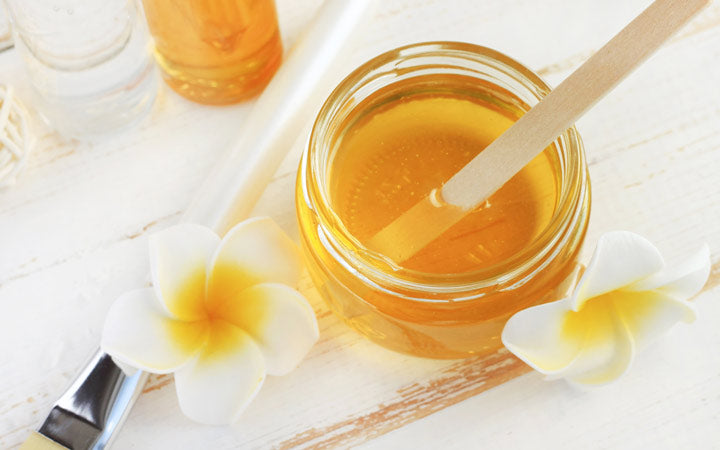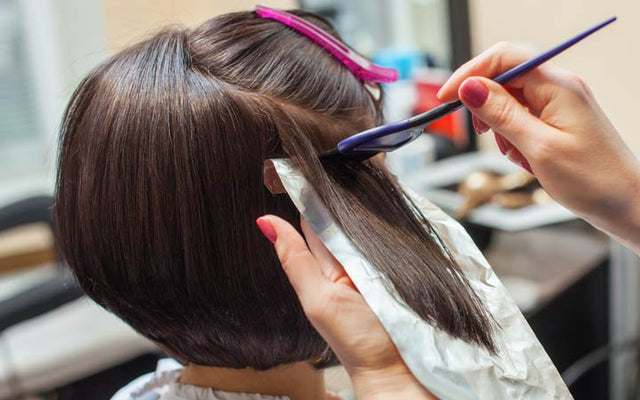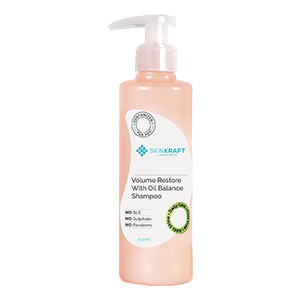Do you feel tempted to dye your hair every time you visit a salon and look at those sheets of hair color options? Whether going for a hair makeover or covering premature greying, there's no shortage of cool hair color trends to try.
Before you decide to drop the dyes on your hair, you must be aware of the allergic reactions they could cause. Hair dyes contain a ton of harmful chemicals that can cause your skin to react adversely. Let us understand why this happens and what you can do to treat it.
What Expert Says
“Paraphenylenediamine or PPD is the commonest cause of hair dye contact dermatitis. Patients can present with a variety of clinical manifestations, including severe reactions.”
Dr. Harish Koutam, Chief Dermatologist, SkinKraft
Highlights:
What Causes Allergy To Hair Dye?
Hair dyes, like many other products, contain a number of chemicals that can irritate your skin. One of the main culprits is Paraphenylenediamine or PPD. This chemical is responsible for giving you long-lasting hair color that seems to appear more natural, when used on hair.
PPD is mainly used in dark hair dyes. It has a reputation of being an allergen for those with sensitive skin or some dry skin conditions. On application, PPD becomes oxidized. This is what causes the allergic reactions. The reaction usually tends to fade away once PPD is fully oxidized.
Dr. Harish Koutam, Chief Dermatologist at SkinKraft says, “Paraphenylenediamine or PPD is the commonest cause of hair dye contact dermatitis. Patients can present with a variety of clinical manifestations, including severe reactions. Patch testing remains the gold standard method for confirming PPD allergy. Avoiding future contact with permanent and semipermanent hair dyes with PPD is the standard preventative measure.”
Some people may only experience skin irritation while for some others, it may get more serious. Contact dermatitis is not an uncommon symptom of this allergic reaction. This may even develop into hives and in some very rare cases, anaphylaxis.
Did You Know?
- PPD is found in tattoo ink, gasoline, dark cosmetic products and printer ink also.
Hair Dye Allergy Symptoms
1. Stinging sensation
2. Inflamed, red skin
3. Itching of the scalp or face
4. Swelling of the scalp/face
5. Swollen eyelids, lips or hands
If you are sensitive to hair dye, you may also develop contact dermatitis symptoms/flare-ups.
If you are allergic to hair dye, your symptoms may take upto 48 hours to show up. It is recommended that you conduct a patch test before using hair dye.
Word of Caution:
Some severe reactions may include a fatal, serious condition known as anaphylaxis. This reaction will need you to visit a doctor immediately.
The symptoms of anaphylaxis are:
- Skin reactions like tingling, stinging and burning
- Rashes
- Fainting
- Nausea and vomiting
- Swelling of throat or tongue
Treatments For Hair Dye Allergies
The treatments for allergies due to hair dye depend on how severe your reaction is:
- If you have mild and immediate/instant reactions, wash the dye off immediately with warm water and mild shampoo.
- If you are experiencing contact dermatitis flare-ups or symptoms, treat the affected area with a topical corticosteroid. Other OTC treatments are also available, which can be used on your skin.
- A shampoo that contains topical corticosteroids like Cobex can be used as well.
- Mild antiseptics like a 2% hydrogen peroxide solution can be applied to the affected area to soothe symptoms.
- Oral antihistamines such as Benadryl can also be consumed to reduce symptoms like itching.
Note:
If you don’t see an improvement in symptoms or experience severe ones, visit your doctor immediately. He may prescribe you corticosteroids or other medications that will help reduce these symptoms.
Topical Home Remedies For Hair Dye Allergies
1. Honey
If you are experiencing contact dermatitis symptoms, you can use honey as a remedy. Honey possesses immunomodulatory properties that can help improve symptoms and reduce rashes (1).
How to use: Take a tablespoon of honey and dab it on the sterile gauze.
Apply the gauze on your rashes. You can repeat this 3-4 times a day.

2. Aloe Vera
Aloe vera gel possesses wound-healing and anti-inflammatory properties. This can help reduce redness and may speed-up the wound-healing process (2).
How to use: You can directly apply freshly extracted aloe vera gel to your rashes. Leave it overnight and wash it off the next morning. Repeat this daily.
3. Coconut Oil
Coconut oil is popularly used to reduce skin irritation and redness. Its anti-inflammatory properties help reduce the redness and inflammation associated with hair dye allergies (3).
How to use: Take one tablespoon of olive oil and warm it a little. Apply it to the affected regions. Leave it overnight and wash it with a shampoo the next morning. You can do this twice a week.
4. Olive Oil
Application of Olive oil can reduce symptoms associated with hair dye allergies. It has anti-inflammatory properties that can reduce swelling, inflammation and redness (4).
How to use: Take one tablespoon of olive oil and warm it a little. Apply it to the affected regions. Leave it overnight and wash it with a shampoo the next morning. You can do this twice a week.
5. Tea Tree Oil
With its anti-inflammatory properties, tea tree oil helps reduce the swelling and rashes caused by contact dermatitis, a common reaction to hair dyes.
How to use: Make a mixture of a few drops of tea tree oil and a tablespoon of jojoba oil. Heat this mixture and apply it on the affected arese. Leave it overnight. Use a mild shampoo to wash it the next morning.
6. Sesame Oil
Sesame oil contains sesamin that is known to have anti-inflammatory properties. Hence, it works great in treating hair dye allergies by reducing itchiness and swelling.
How to use: Heat two tablespoons of sesame oil and heat it lightly. Apply it on the affected regions. Leave it for either half an hour or overnight and wash it using a shampoo.
Alternative Hair Colors To Use
There has been an attempt by manufacturers to substitute PPD with other ingredients like para-toluenediamine sulfates, which are considered to be safer than PPD.
However, if you think you are allergic to PPD, you can use henna to color your hair instead. Remember that PPD is used in high concentrations in darker hair colors especially.
Tips To Prevent Hair Dye Allergies
- It’s important to learn what you’re allergic to. Hair dye allergies can occur at any time, even if you have color-treated your hair before. In case of any symptoms, immediately rinse off and stop using the product.
- Don’t add any extra color as that can result in more adverse allergic reactions.
- Always conduct a patch test before you use a product that contains ingredients like PPD. If you do not notice any reactions after 48 hours, you may continue to apply it to your hair.
Wrapping Up
Hair dye allergies could be both mild or severe. The symptoms range from redness and itching to anaphylaxis in rare cases. Conducting a patch test is recommended before you apply hair dye to your hair. The ingredient that has a reputation of causing these reactions is PPD. To avoid allergies from hair dyes, you could opt for hair colors that use para-toluenediamine (which is considered safer) or henna.
Recommended Products
Was this Article helpful?
- Least helpful
- Most helpful


 Upto 50% Off
Upto 50% Off







